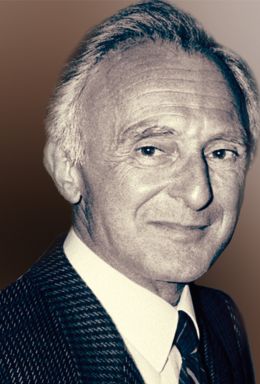Related Research Articles

A carcinogen is any agent that promotes the development of cancer. Carcinogens can include synthetic chemicals, naturally occurring substances, physical agents such as ionizing and non-ionizing radiation, and biologic agents such as viruses and bacteria. Most carcinogens act by creating mutations in DNA that disrupt a cell's normal processes for regulating growth, leading to uncontrolled cellular proliferation. This occurs when the cell's DNA repair processes fail to identify DNA damage allowing the defect to be passed down to daughter cells. The damage accumulates over time. This is typically a multi-step process during which the regulatory mechanisms within the cell are gradually dismantled allowing for unchecked cellular division.
Genotoxicity is the property of chemical agents that damage the genetic information within a cell causing mutations, which may lead to cancer. While genotoxicity is often confused with mutagenicity, all mutagens are genotoxic, but some genotoxic substances are not mutagenic. The alteration can have direct or indirect effects on the DNA: the induction of mutations, mistimed event activation, and direct DNA damage leading to mutations. The permanent, heritable changes can affect either somatic cells of the organism or germ cells to be passed on to future generations. Cells prevent expression of the genotoxic mutation by either DNA repair or apoptosis; however, the damage may not always be fixed leading to mutagenesis.

Benzo[a]pyrene (BaP or B[a]P) is a polycyclic aromatic hydrocarbon and the result of incomplete combustion of organic matter at temperatures between 300 °C (572 °F) and 600 °C (1,112 °F). The ubiquitous compound can be found in coal tar, tobacco smoke and many foods, especially grilled meats. The substance with the formula C20H12 is one of the benzopyrenes, formed by a benzene ring fused to pyrene. Its diol epoxide metabolites, more commonly known as BPDE, react with and bind to DNA, resulting in mutations and eventually cancer. It is listed as a Group 1 carcinogen by the IARC. In the 18th century a scrotal cancer of chimney sweepers, the chimney sweeps' carcinoma, was already known to be connected to soot.

Processed meat is considered to be any meat that has been modified in order to either improve its taste or to extend its shelf life. Methods of meat processing include salting, curing, fermentation, smoking, boiling, frying, and/or the addition of chemical preservatives. Processed meat is usually composed of pork or beef or, less frequently, poultry. It can also contain offal or meat by-products such as blood. Processed meat products include bacon, ham, sausages, salami, corned beef, jerky, hot dogs, lunch meat, canned meat, chicken nuggets, and meat-based sauces. Meat processing includes all the processes that change fresh meat with the exception of simple mechanical processes such as cutting, grinding or mixing.
The International Agency for Research on Cancer is an intergovernmental agency forming part of the World Health Organization of the United Nations. Its role is to conduct and coordinate research into the causes of cancer. It also collects and publishes surveillance data regarding the occurrence of cancer worldwide.
IARC group 1 Carcinogens are substances, chemical mixtures, and exposure circumstances which have been classified as carcinogenic to humans by the International Agency for Research on Cancer (IARC). This category is used when there is sufficient evidence of carcinogenicity in humans. Exceptionally, an agent may be placed in this category when evidence of carcinogenicity in humans is less than sufficient, but when there is sufficient evidence of carcinogenicity in experimental animals and strong evidence in exposed humans that the agent (mixture) acts through a relevant mechanism of carcinogenicity.
IARC group 2A agents are substances and exposure circumstances that have been classified as probable carcinogens by the International Agency for Research on Cancer (IARC). This designation is applied when there is limited evidence of carcinogenicity in humans, as well as sufficient evidence of carcinogenicity in experimental animals. In some cases, an agent may be classified in this group when there is inadequate evidence of carcinogenicity in humans along with sufficient evidence of carcinogenicity in experimental animals and strong evidence that the carcinogenesis is mediated by a mechanism that also operates in humans. Exceptionally, an agent may be classified in this group solely on the basis of limited evidence of carcinogenicity in humans.

Doxefazepam is a benzodiazepine medication It possesses anxiolytic, anticonvulsant, sedative and skeletal muscle relaxant properties. It is used therapeutically as a hypnotic. According to Babbini and colleagues in 1975, this derivative of flurazepam was between 2 and 4 times more potent than the latter while at the same time being half as toxic in laboratory animals.

In molecular genetics, a DNA adduct is a segment of DNA bound to a cancer-causing chemical. This process could lead to the development of cancerous cells, or carcinogenesis. DNA adducts in scientific experiments are used as biomarkers of exposure. They are especially useful in quantifying an organism's exposure to a carcinogen. The presence of such an adduct indicates prior exposure to a potential carcinogen, but it does not necessarily indicate the presence of cancer in the subject animal.

Cytochrome P450 2A13 is a protein that in humans is encoded by the CYP2A13 gene.

CYP2A7 is a protein that in humans is encoded by the CYP2A7 gene.
A co-carcinogen is a chemical that promotes the effects of a carcinogen in the production of cancer. Usually, the term is used to refer to chemicals that are not carcinogenic on their own, such that an equivalent amount of the chemical is insufficient to initiate carcinogenesis. A chemical can be co-carcinogenic with other chemicals or with nonchemical carcinogens, such as UV radiation.

Glucosamine-6-phosphate deaminase 2 also known as GNPDA2 is an enzyme that in humans is encoded by the GNPDA2 gene.

Erionite is a naturally occurring fibrous mineral that belongs to a group of minerals called zeolites. It usually is found in volcanic ash that has been altered by weathering and ground water. Erionite forms brittle, wool-like fibrous masses in the hollows of rock formations and has an internal molecular structure similar to chabazite. Some properties of erionite are similar to the properties of asbestos; however, erionite is not currently regulated by the U.S. Environmental Protection Agency and there are no occupational exposure limits for erionite fibers. Erionite was first described by A.S. Eakle in 1898, as white woolly fibrous masses in cavities in rhyolite lava near Durkee, Oregon. It was originally thought to be another relatively rare zeolite named offretite, which is very similar to erionite in appearance and chemical composition.

Chlornaphazine, a derivative of 2-naphthylamine, is a nitrogen mustard that was developed in the 1950s for the treatment of polycythemia and Hodgkin's disease. However, a high incidence of bladder cancers in patients receiving treatment with chlornaphthazine led to use of the drug being discontinued.

A gene is said to be polymorphic if more than one allele occupies that gene's locus within a population. In addition to having more than one allele at a specific locus, each allele must also occur in the population at a rate of at least 1% to generally be considered polymorphic.
Cancer is caused by genetic changes leading to uncontrolled cell growth and tumor formation. The basic cause of sporadic (non-familial) cancers is DNA damage and genomic instability. A minority of cancers are due to inherited genetic mutations. Most cancers are related to environmental, lifestyle, or behavioral exposures. Cancer is generally not contagious in humans, though it can be caused by oncoviruses and cancer bacteria. The term "environmental", as used by cancer researchers, refers to everything outside the body that interacts with humans. The environment is not limited to the biophysical environment, but also includes lifestyle and behavioral factors.

Lorenzo (Renzo) Tomatis was an Italian physician and experimental oncologist who researched carcinogenesis and its primary prevention

Curtis. C. Harris is the head of the Molecular Genetics and Carcinogenesis Section and chief of the Laboratory of Human Carcinogenesis at the Center for Cancer Research of the National Cancer Institute, NIH.

Casc1, alias Las1, is one of the six genes constituting the mouse Pulmonary adenoma susceptibility 1 (Pas1) locus haplotype. Cancer susceptibility 1 is a protein that in humans is encoded by the CASC1 gene.
References
- ↑ Cancer Res. 1993;53:209-11
- ↑ Nat Genet. 1993;3:132-6
- ↑ Nat Genet.1996;12:455-7
- ↑ Oncogene. 2000;19:5324-8
- ↑ PLoS Genet. 2014;10:e1004307
- ↑ Cancer Lett. 2016;375:221-230
- ↑ Cancer Res. 1993;53:209-11
- ↑ Nat Genet. 1993;3:132-6
- ↑ Nat Genet.1996;12:455-7
- ↑ Oncogene. 2000;19:5324-8
- ↑ PLoS Genet. 2014;10:e1004307
- ↑ Cancer Lett. 2016;375:221-230
- ↑ J Natl Cancer Inst. 2010;102:1366-70
- ↑ Carcinogenesis. 2013;34:1281-5
- ↑ Clin Cancer Res. 2011;17:4581-7
- ↑ Cancer Res. 1993;53:209-11
- ↑ Nat Genet. 1993;3:132-6
- ↑ Nat Genet.1996;12:455-7
- ↑ Oncogene. 2000;19:5324-8
- ↑ PLoS Genet. 2014;10:e1004307
- ↑ Cancer Lett. 2016;375:221-230
- ↑ J Clin Oncol. 2006;24:1672-8
- ↑ J Natl Cancer Inst. 2010;102:1366-70
- ↑ Carcinogenesis. 2013;34:1281-5
- ↑ Clin Cancer Res. 2011;17:4581-7
- ↑ Della Porta G, Dragani TA, Sozzi G. Carcinogenic effects of infantile and long-term 2,3,7,8-tetrachlorodibenzo-p-dioxin treatment in the mouse. Tumori. 1987;73(2):99–107.
- ↑ World Health Organization International Agency for Research on Cancer, Iarc Monographs on the Evaluation of Carcinogenic Risks to Humans. Volume 57. Occupational exposures of hairdressers and barbers and personal use of hair colourants; some hair dyes, cosmetic colourants, industrial dyestuffs, and aromatic amines, LYON
- ↑ World Health Organization International Agency for Research on Cancer, Iarc Monographs on the Evaluation of Carcinogenic Risks to Humans. Volume 59. Hepatitis viruses, LYON
- ↑ World Health Organization International Agency for Research on Cancer, Iarc Monographs on the Evaluation of Carcinogenic Risks to Humans. Volume 60. Some industrial chemicals, LYON
- ↑ World Health Organization International Agency for Research on Cancer, Iarc Monographs on the Evaluation of Carcinogenic Risks to Humans. Volume 71. Re-evaluation of some organic chemicals, hydrazine and hydrogen peroxide, LYON
- ↑ World Health Organization International Agency for Research on Cancer, Iarc Monographs on the Evaluation of Carcinogenic Risks to Humans. Volume 76. Some antiviral and antineoplastic drugs, and other pharmaceutical agents, LYON
- ↑ World Health Organization International Agency for Research on Cancer, Iarc Monographs on the Evaluation of Carcinogenic Risks to Humans. Volume 77. Some industrial chemicals, LYON
- ↑ International Lung Cancer Consortium (ILCCO)